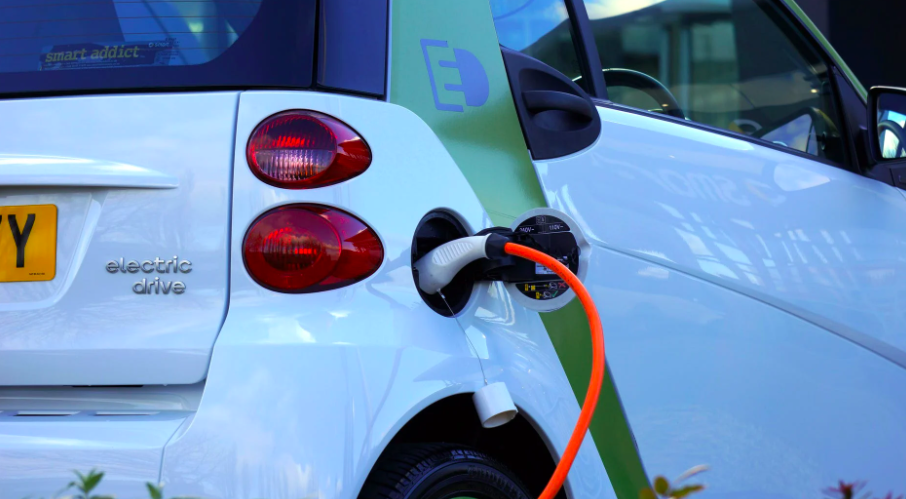Whether the concern is rooted in polluted air, in greenhouse emissions or in a dependency on a finite supply of resources, businesses and governments worldwide have begun the search for cleaner, more abundant fuels. Words like zero-emission, once only seen in environmental reports, are now entering board room and political discourse as leaders respond to a growing demand for better management of our resources and their associated externalities.
Nowhere is this more evident than in the auto market, both domestically and internationally. Recent all-electric automobile releases, such as the Model S from Tesla Motors or the Leaf from Nissan, have entered the market for low-emission vehicles, competing with hybrids such as the Toyota Prius, the Honda Accord Hybrid, and the Chevy Volt. Governments have made this entry easier by providing subsidies for the alternative fuel cars, as well as making assistance available for infrastructure development to support electric vehicles. However, while the new entries garner media attention and praise, little is being said or promoted about another key player in providing sustainable energy: hydrogen.
Hydrogen has long been seen as a possible answer to our transportation challenges. It burns clean, is more chemically efficient than gasoline, and the only by-product produced is water. Some proponents of a hydrogen economy envision a world where we have unlimited, clean power, made possible by extracting hydrogen from sea water, one of the most abundant resources on earth.
This argument is especially relevant in the face of the rise of electric cars as they are clearly dependent on electricity, which has to be produced somewhere. Critics of electric cars as a final solution point out that we are merely shuffling the deck in regards to emissions, as the energy to power the vehicles is often still dependent on burning fuel to create electricity.
The main means of using hydrogen is through the fuel cell. These cells utilize a chemical reaction to convert fuel, most often hydrogen, into electricity. An advantage of fuel cells is that they mimic current auto technology, especially in terms of range and refueling. A bank of fuel cells placed in a car where the engine would normally rest can power a car for hundreds of miles and be quickly refueled at a hydrogen station. This trumps the current status of electric cars, which are hampered by shorter operating ranges and long refueling (recharging) times.
With the many benefits available through hydrogen, several steps have been taken to expand and test the applicability of this technology. London, for example, currently has five public buses running on hydrogen, with three more expected to be fully integrated into the public transport system by the end of this year. In addition, Toyota recently unveiled a fuel cell concept car slated to enter the market in 2015. Other automakers, including Ford, Daimler and Nissan, have also announced plans to produce fuel-cell vehicles in the next five years.
However, these entries into the hydrogen market are relatively small, deliberate and mostly theoretical efforts at the moment. While the technology exists, widespread production and adoption face significant challenges. These challenges are only made more difficult with the advance and promotion of electric cars.
The main pain point focuses on infrastructure development. Both electric and hydrogen-powered vehicles require refueling stations. In a classic example of the chicken and the egg paradox, businesses do not want to provide alternative fuel vehicles to a market with low demand, while consumer demand is low due to the impracticality of a new technology due to a lack of alternative fuel stations. Recent steps have been taken in many states to provide electric charging stations, beginning to build up the infrastructure needed for electric vehicles, while hydrogen is largely ignored. This poses a significant threat that could delay the entry of hydrogen vehicles for many years.
Another challenge is that at the moment hydrogen production facilities are limited in size and scope. The process of extracting hydrogen from sea water is possible, yet highly expensive, with our current methods. It also requires its own energy inputs, again touching on the problem of possibly remaining reliant on fossil fuels. An energy provider would much rather focus on an existing strength, producing electricity from reliable sources, than delve into a new, riskier technology.
All in all, with the rise of electric vehicles, we need to be aware of crowding out other potential energy alternatives. Who knows whether the hydrogen economy will be viable. But we have to be aware that electricity produced through traditional carbon-based sources of fuel is not leading to a sustainable energy future.
John Hoffmire is Director of the Impact Bond Fund at Saïd Business School at Oxford University and directs the Center on Business and Poverty at the Wisconsin School of Business at UW-Madison. He runs Progress Through Business, a non-profit promoting economic development.
Ben Young, Hoffmire’s colleague at Progress Through Business, did the research for this article
Read the latest news at the Energy Collective Act Now





